Goals of this lesson
The given example describes a simple customer support process which delivers product information for customers. Therefore a customer calls the customer support. The staff enlists the customers’ wishes / questions in a ticket system and provides the required information afterwards. In this case we'll work with three cost factors – employee salary, costs for the ticket system license and energy costs caused by the use of personal computers.
How-to
Approach
Modeling

Figure 1: Collaboration Diagram of the example process / IYOPRO link
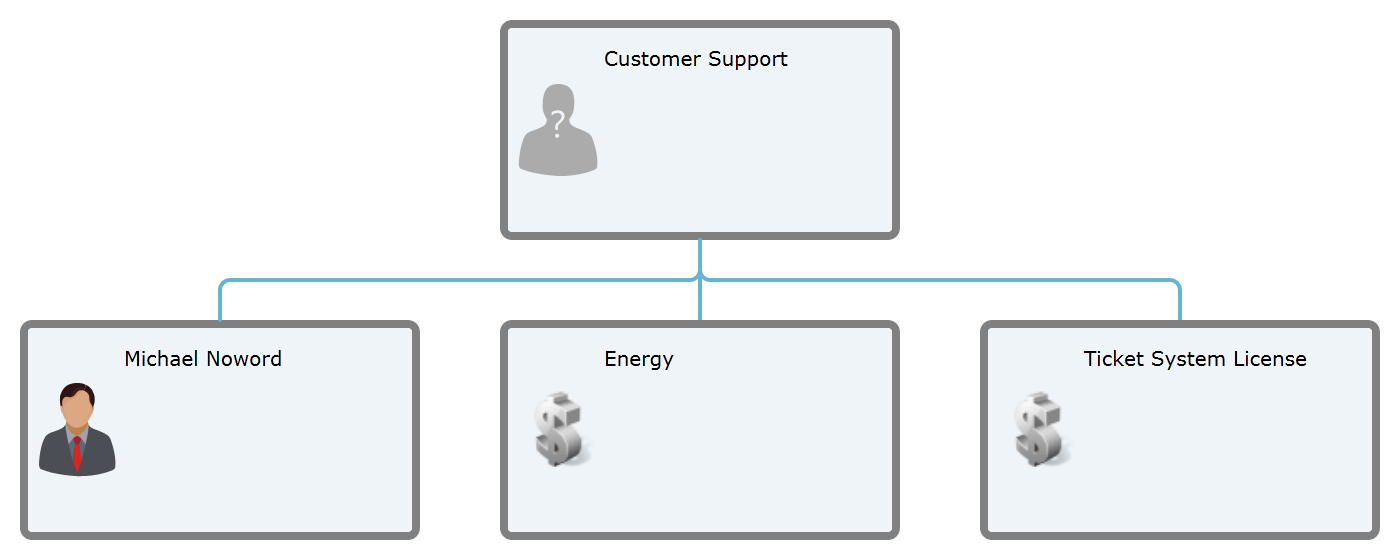
Figure 2: Organizational Diagram IYOPRO link
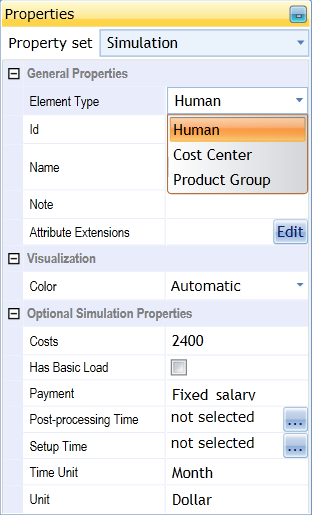
Figure 3: Simulation properties
Defining payments and working times of employees
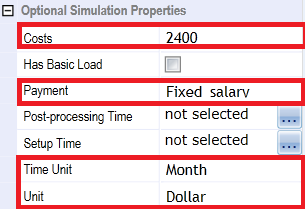
Figure 4: Optional Simulation Properties
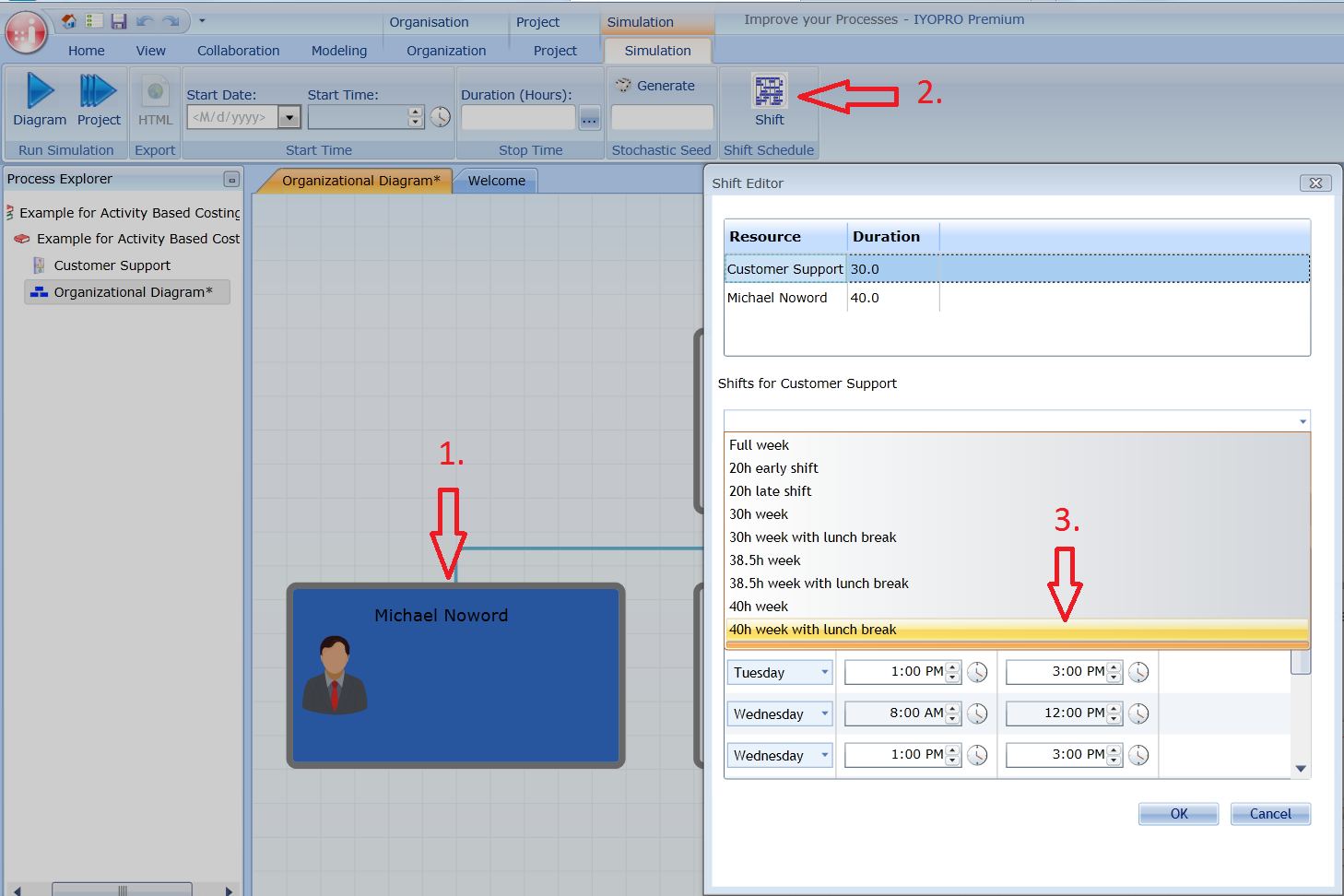
Figure 5: Shift Editor
Distributing cost factors
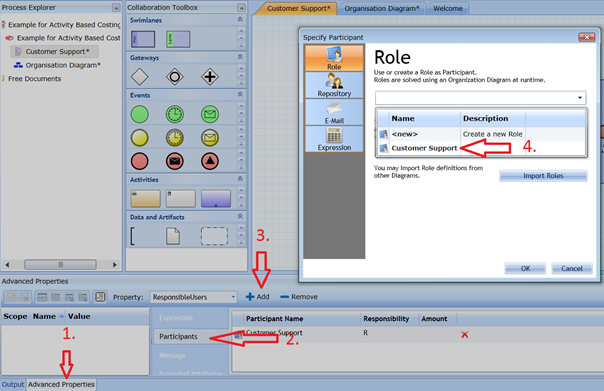
Figure 6: Adding participants
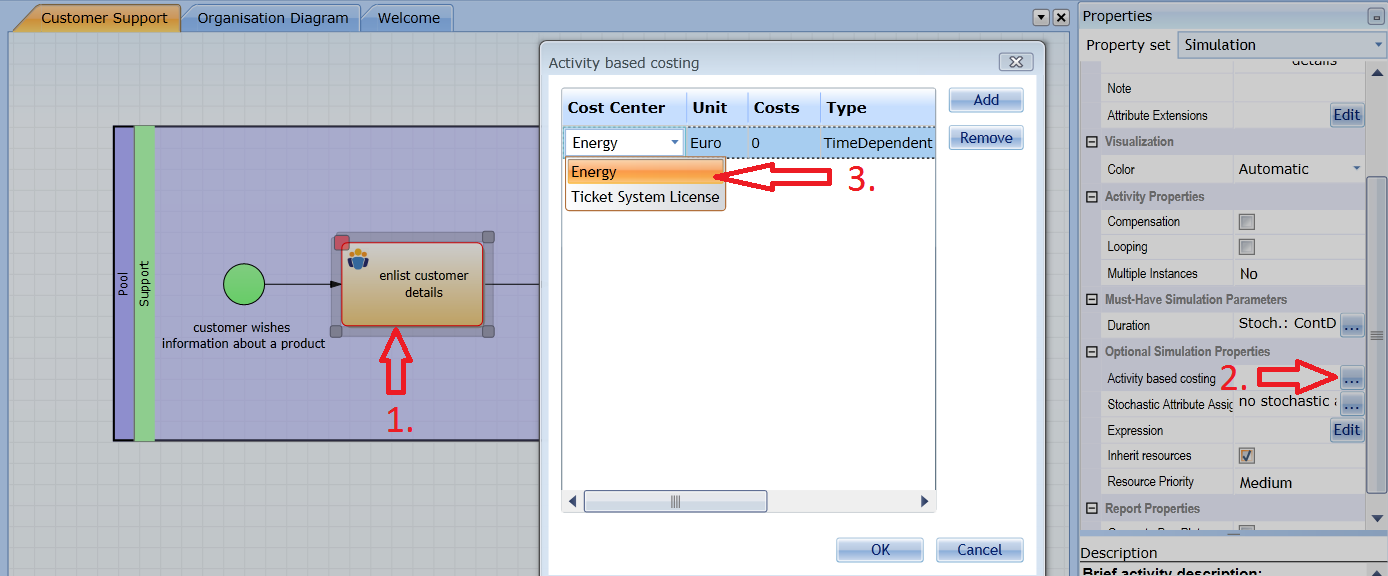
Figure 7: Distributing Cost Centers
Adding duration and inter-arrival time
How to set durations and inter-arrival time has already been explained in a previous tutorial. Set the properties described as follows:
Explanation
First of all we modeled the process and the organizational set-up. Then we filled the organizational resources with the required information. Humans need salary assigned to cost factor as well as a working plan since they aren't available 24h per day. An employee can have different roles in different processes. Thus we had to assign Michael Noword to the role 'Customer Support' in context of our process. This role was attached to the tasks to point out who executes the tasks. Right after that we assigned the energy costs to our tasks. Tasks spend energy because the participant works with a personal computer. The more time is spent to finish his tasks the more energy is needed. So the consumption is time dependent. The cost center ticket system license doesn't have to be assigned to tasks because it isn't influenced by activity durations and the number of process cycles. These costs will be distributed over the number of process cycles in the simulation. In the end we set our activity durations and inter-arrival time to denote how much time our activities take and how often the process is started. These properties are also needed for our time dependent energy costs.